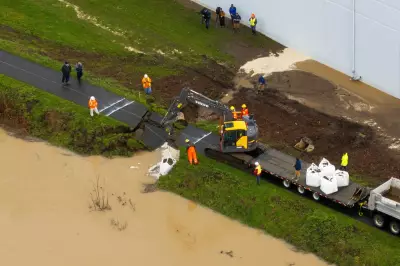
A powerful tropical cyclone is wreaking havoc across two continents, with Tropical Cyclone Tino battering both the Philippines and Queensland, Australia, in a rare dual-front weather disaster that has emergency services stretched to their limits.
Catastrophic Impact in the Philippines
The cyclone made its initial landfall in the eastern Philippines, bringing torrential rains and destructive winds that have triggered widespread flooding and forced thousands from their homes. Emergency services are working around the clock to rescue stranded residents as floodwaters continue to rise in low-lying communities.
Local authorities have reported significant damage to infrastructure, including:
- Power outages affecting multiple regions
- Road closures due to flooding and landslides
- Damage to agricultural areas threatening livelihoods
- Emergency shelters operating at full capacity
Queensland Braces for Impact
Meanwhile, on the other side of the Coral Sea, Queensland authorities have issued severe weather warnings as Cyclone Tino approaches the Australian coast. Residents in vulnerable areas are being urged to prepare for the storm's arrival, with forecasts predicting:
- Dangerous storm surges along coastal regions
- Heavy rainfall leading to flash flooding
- Destructive winds capable of damaging property
- Potential disruption to essential services
Emergency Response Mobilised
Emergency services in both nations have been placed on high alert, with rescue teams prepositioned in areas expected to bear the brunt of the cyclone's fury. The unusual simultaneous impact on two different countries has created a complex coordination challenge for disaster management agencies.
Meteorologists warn that climate change may be contributing to more intense and unpredictable tropical cyclone behaviour, raising concerns about future storm patterns in the region.
As Tropical Cyclone Tino continues its destructive path, authorities emphasise that public safety remains the highest priority, urging residents in affected areas to follow official warnings and evacuation orders without delay.





